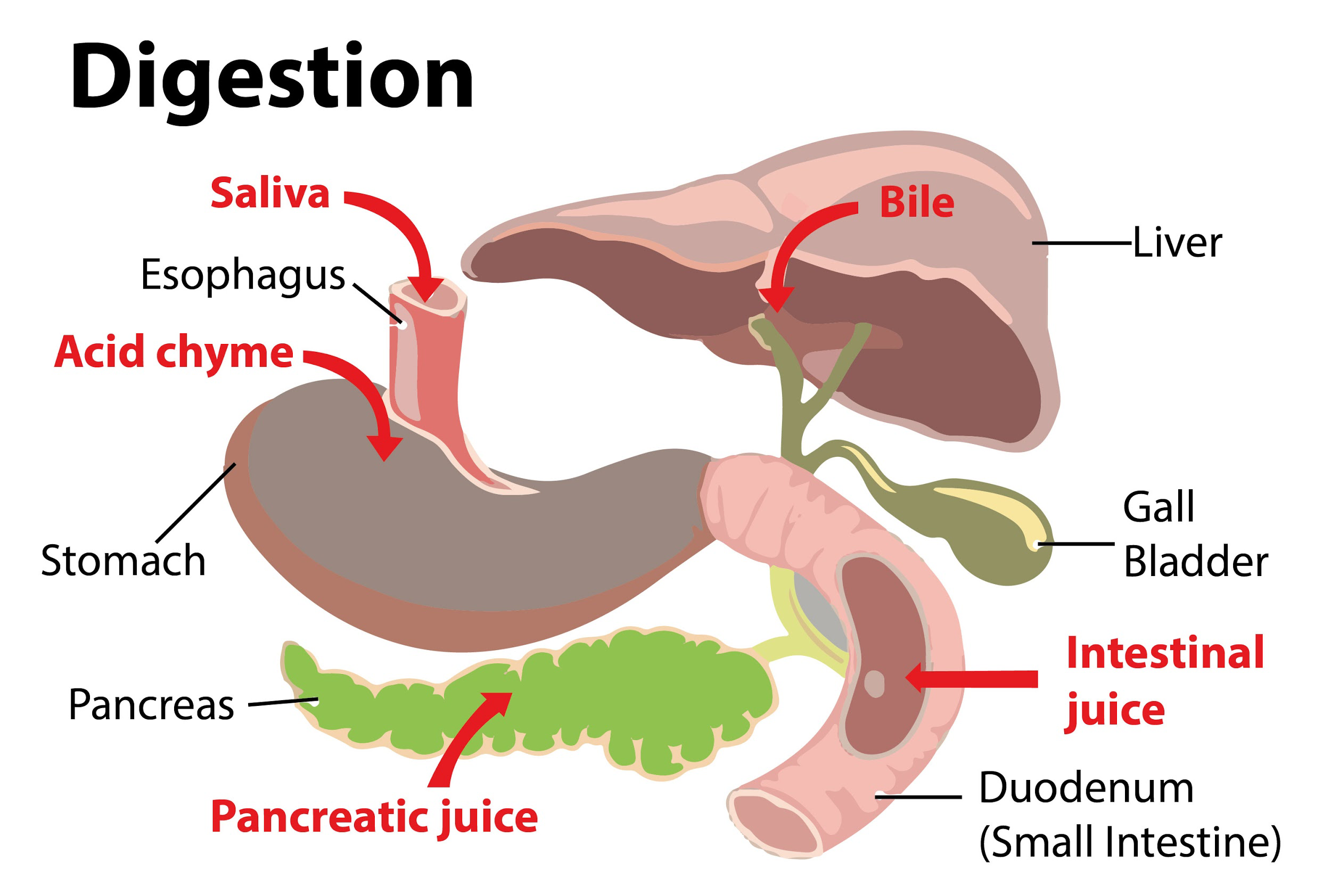
Answer
470.7k+ views
Hint: The small intestine is an organ present in the gastrointestinal tract. It is located between the stomach and the large intestine. Most of the digestion and absorption of food takes place here and is the longest part of the digestive system.
Complete answer:
The small intestine is the place where large amounts of nutrients and minerals along with water is absorbed. It secretes digestive juices which help in digestion and absorption of food. The juices from the pancreas and gallbladder will be transferred to the small intestine which helps in the process of digestion.
The small intestine is divided into three main parts: duodenum (the shortest region near the stomach), jejunum (middle portion), and ileum (the end portion of the small intestine which involves the absorption of remaining products). In the duodenum, small finger-like projections called villi are present which helps in the absorption of the food. Jejunum has a lining of enterocyte cells which digests small nutrients with the help of digestive enzymes. The ileum helps in the absorption of bile salts, vitamin B12, and other products that were left.
In the small intestine, the hormones cholecystokinin and secretin are produced which along with digestive enzymes and juices results in the absorption and digestion of food. In the small intestine, three classes of nutrients are digested which involves lipids, proteins, and carbohydrates.

Note:
The digestive system was discovered in the seventeenth century by a Flemish physician Jan Baptiste Van Helmont. The digestion starts from the esophagus and from there the food is transported to the stomach, then the small intestine to the large intestine, and finally, from the large intestine, the remaining wastes are excreted through the anus.
Complete answer:
The small intestine is the place where large amounts of nutrients and minerals along with water is absorbed. It secretes digestive juices which help in digestion and absorption of food. The juices from the pancreas and gallbladder will be transferred to the small intestine which helps in the process of digestion.
The small intestine is divided into three main parts: duodenum (the shortest region near the stomach), jejunum (middle portion), and ileum (the end portion of the small intestine which involves the absorption of remaining products). In the duodenum, small finger-like projections called villi are present which helps in the absorption of the food. Jejunum has a lining of enterocyte cells which digests small nutrients with the help of digestive enzymes. The ileum helps in the absorption of bile salts, vitamin B12, and other products that were left.
In the small intestine, the hormones cholecystokinin and secretin are produced which along with digestive enzymes and juices results in the absorption and digestion of food. In the small intestine, three classes of nutrients are digested which involves lipids, proteins, and carbohydrates.

Note:
The digestive system was discovered in the seventeenth century by a Flemish physician Jan Baptiste Van Helmont. The digestion starts from the esophagus and from there the food is transported to the stomach, then the small intestine to the large intestine, and finally, from the large intestine, the remaining wastes are excreted through the anus.
Recently Updated Pages
10 Examples of Evaporation in Daily Life with Explanations

10 Examples of Diffusion in Everyday Life

1 g of dry green algae absorb 47 times 10 3 moles of class 11 chemistry CBSE

What is the meaning of celestial class 10 social science CBSE

What causes groundwater depletion How can it be re class 10 chemistry CBSE

Under which different types can the following changes class 10 physics CBSE

Trending doubts
Fill the blanks with the suitable prepositions 1 The class 9 english CBSE

Which are the Top 10 Largest Countries of the World?

How do you graph the function fx 4x class 9 maths CBSE

Differentiate between homogeneous and heterogeneous class 12 chemistry CBSE

Difference between Prokaryotic cell and Eukaryotic class 11 biology CBSE

Change the following sentences into negative and interrogative class 10 english CBSE

The Equation xxx + 2 is Satisfied when x is Equal to Class 10 Maths

Why is there a time difference of about 5 hours between class 10 social science CBSE

Give 10 examples for herbs , shrubs , climbers , creepers




